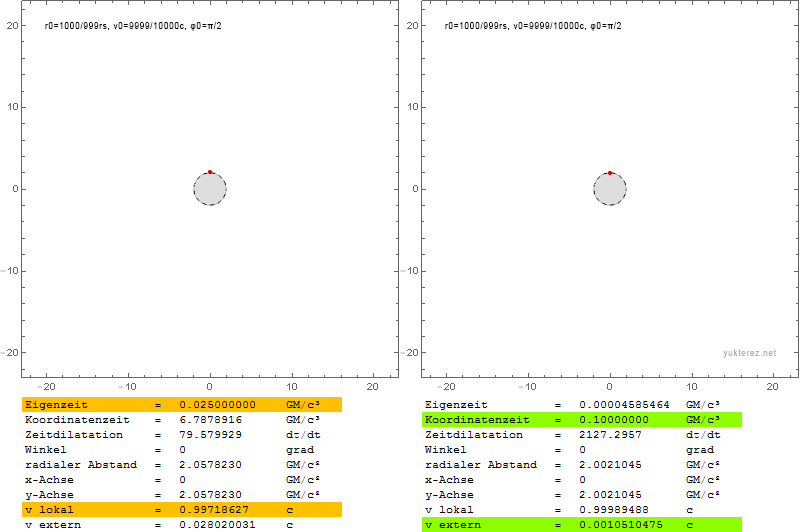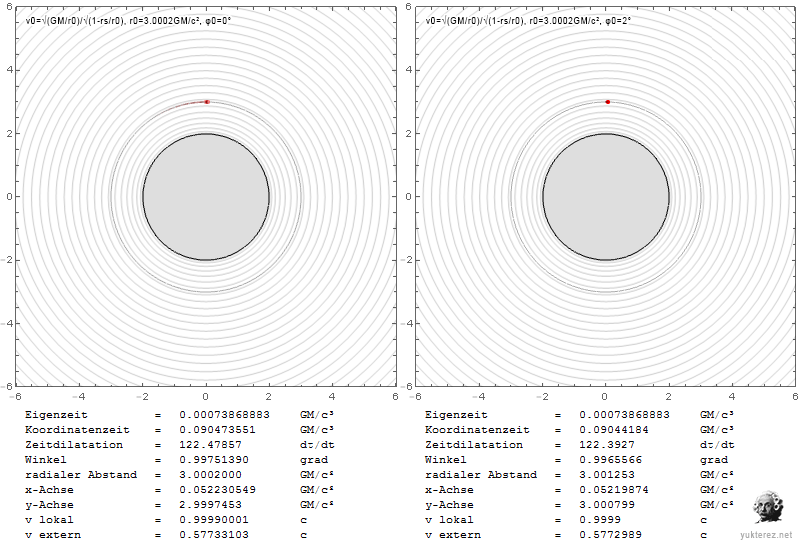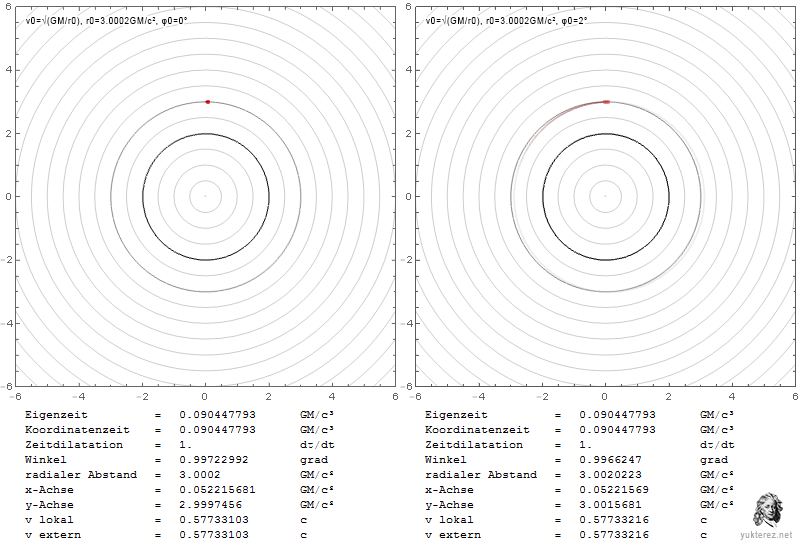The local escape velocity is
$$v_{esc} = \sqrt{\text{2 G M}/\text{r}}$$
At infinty you observe that velocity slower by a factor of
$$1-\text{r}_s/\text{r}$$
so at infinity you observe
$$\text{v}_{esc} = \sqrt{\text{2 G M}/\text{r}} \cdot (1-\text{r}_s/\text{r})$$
because of gravitational length contraction radial to the mass and gravitational time dilation in all directions.
The local orbital velocity is
$$v_{orb} = \sqrt{\text{G M}/\text{r}}/\sqrt{1-\text{r}_s/\text{r}}$$
which is at infinity observed to be slower by a factor of
$$\sqrt{1-\text{r}_s/\text{r}}$$
At infinity you observe simply
$$\text{v}_{orb} = \sqrt{\text{G M}/\text{r}}$$
So the observer at infity should observe an orbiting particle orbit with it's newtonian velocity, while locally this velocity is higher.

The Plots show the velocities in terms of v/c and the Schwarzschild r coordinate in units of GM/c². Left is the system of a local observer, and right like an observer at infinity would see the Shapiro-delayed velocities.
Locally the escape velocity equals the orbital velocity at r=4GM/c², while at infinity their equality is observed at r=2·(2+√2)=6.8284GM/c².
At the photon sphere a local observer would observe the orbiting particle with c, while an observer at infinity would measure it slower by a factor of √(1-2/3), so with 0.577c.
An escaping particle near the event horizon would need a local radial velocity of c, and seem to have zero velocity for the observer at infinity.
The different factors for the radial and the transversal components is due the graviational length contraction which is only in radial direction (there is more radius inside the circle than the circumference divided by 2π).
To sum it up:
Locally, the radial escape velocity for Einstein is the same as for Newton. At infinity it is observed slower than that.
Also locally, the angular orbital velocity for Einstein is higher than for Newton, but at infinity it is observed to be the same as it would be under Newton.
The escape velocity can be lower than the orbital velocity, therefore orbits near the photon sphere are unstable in a sense that if your velocity is not only transversal but splits into a transversal and a radial component you will escape to infinity. With Newton you would just get an elliptical orbit with everything else staying the same.
Radial:

Transversal:

Comparison with Newton:

The index is in german, but I'm sure you'll find the local $v$ and the external $\text{v}$ (the latter with Shapiro delay).
Further reading: Equation of Motion and Geodesics, page 4, eq(9)
Code




Best Answer
The one thing to keep in mind is that in order to perform a gravity-assist maneuver, you need to be able to enter a hyperbolic orbit around a given body that is moving relative to your destination. And, in order to be in such an orbit, there is a specific range of velocities for every object that you must have (dependent on mass of the object). So the fastest you can get to by gravity-assist is much less than relativistic speeds because at relativistic speeds, you would not be able to enter into a proper hyperbolic orbit.
It is true that at any high speed, a flyby constitutes a hyperbolic orbit; however, to use a gravitational slingshot, you need to enter against the object's motion and exit with the motion from that object's point of view. At relativistic speeds and for most regular bodies, your orbit would closely resemble a straight line, there could be no gain of velocity.
A good gravity assist works if you can ensure that your hyperbolic trajectory minimizes the angle $\theta$ between the assisting body's trajectory and the spacecraft's exit trajectory. It is given by:
$$\theta=cos^{-1}(1/e)$$
Where $e$ is the eccentricity of the orbit and must satisfy $e\geq1$. From this, one can see that a parabolic trajectory is best as the exit trajectory is directly in line with the body's trajectory. We can also see that as $e\rightarrow\infty$, the exit trajectory is at right angles to the body's trajectory and we get no help from the assist. Additionally, as your velocity increases, it will force $e$ to become larger unless you significantly increase the mass of each subsequent object. So, for a normal assisting body, like a star or a planet, travelling past it at relativistic speeds will result in minimal orbital deviation; there will be practically no transfer of momentum, which makes for an even smaller increase in velocity.
The fastest a spacecraft can get to using gravity-assists very much depends on the largest mass of the objects you use. However, I cannot give you an estimate of a number because due to the sheer impracticality of using gravity-assists to achieve extreme velocities, we (rocket scientists) haven't ever tried computing a theoretical limit. I can guarantee you though that without using high density objects (neutron stars, black holes, etc.), no spacecraft will reach velocities near the speed of light by gravity slingshots alone.